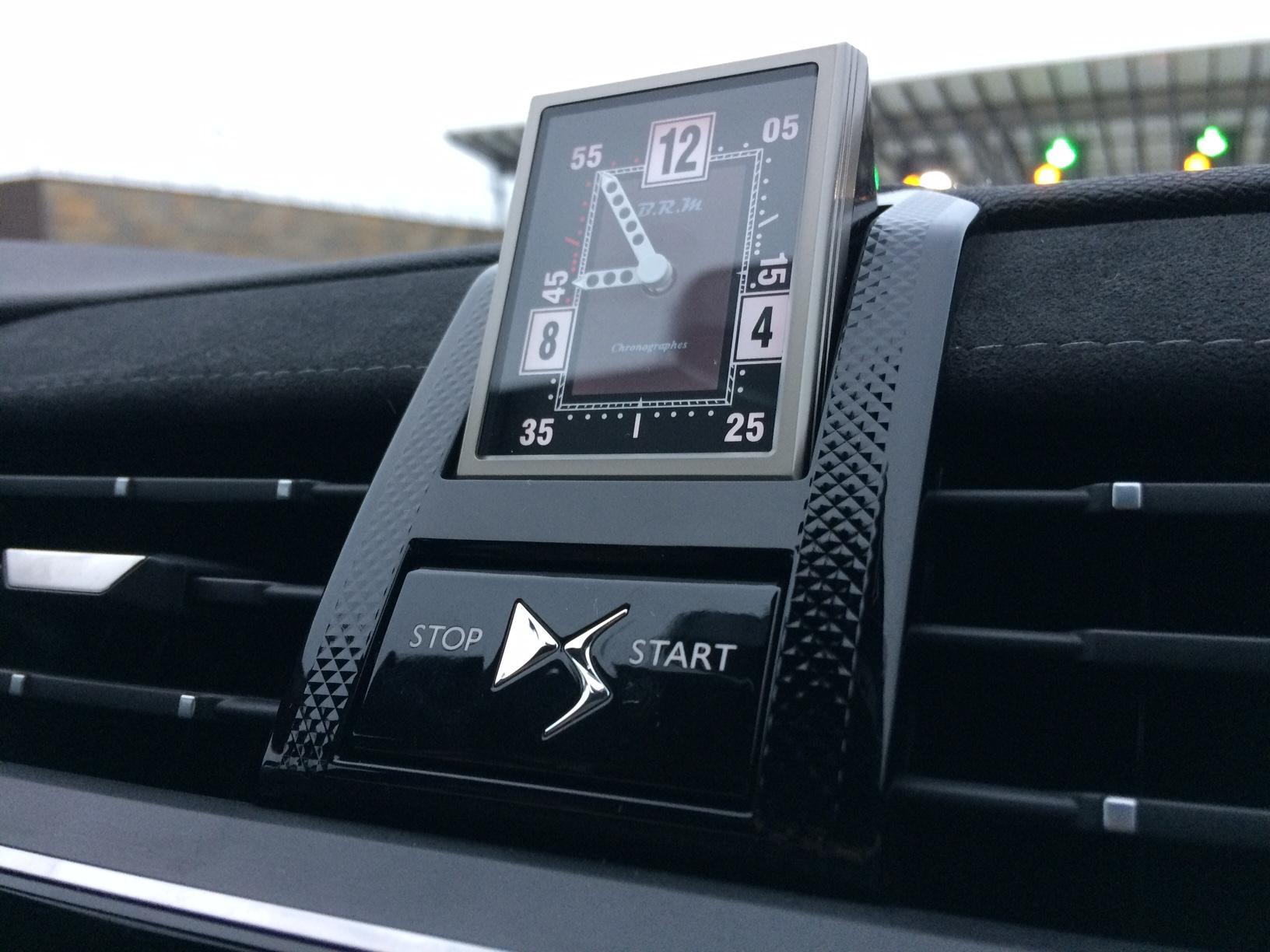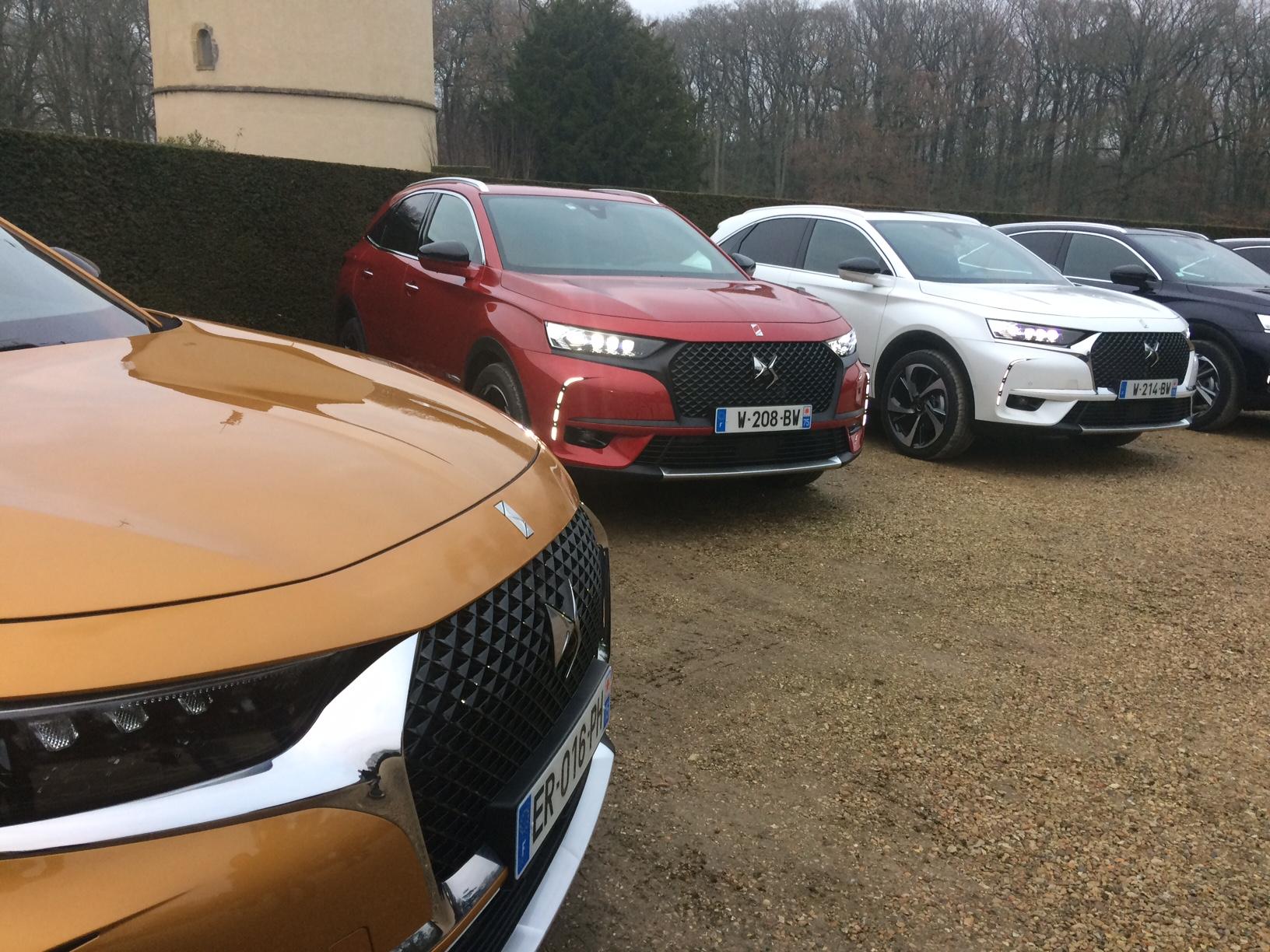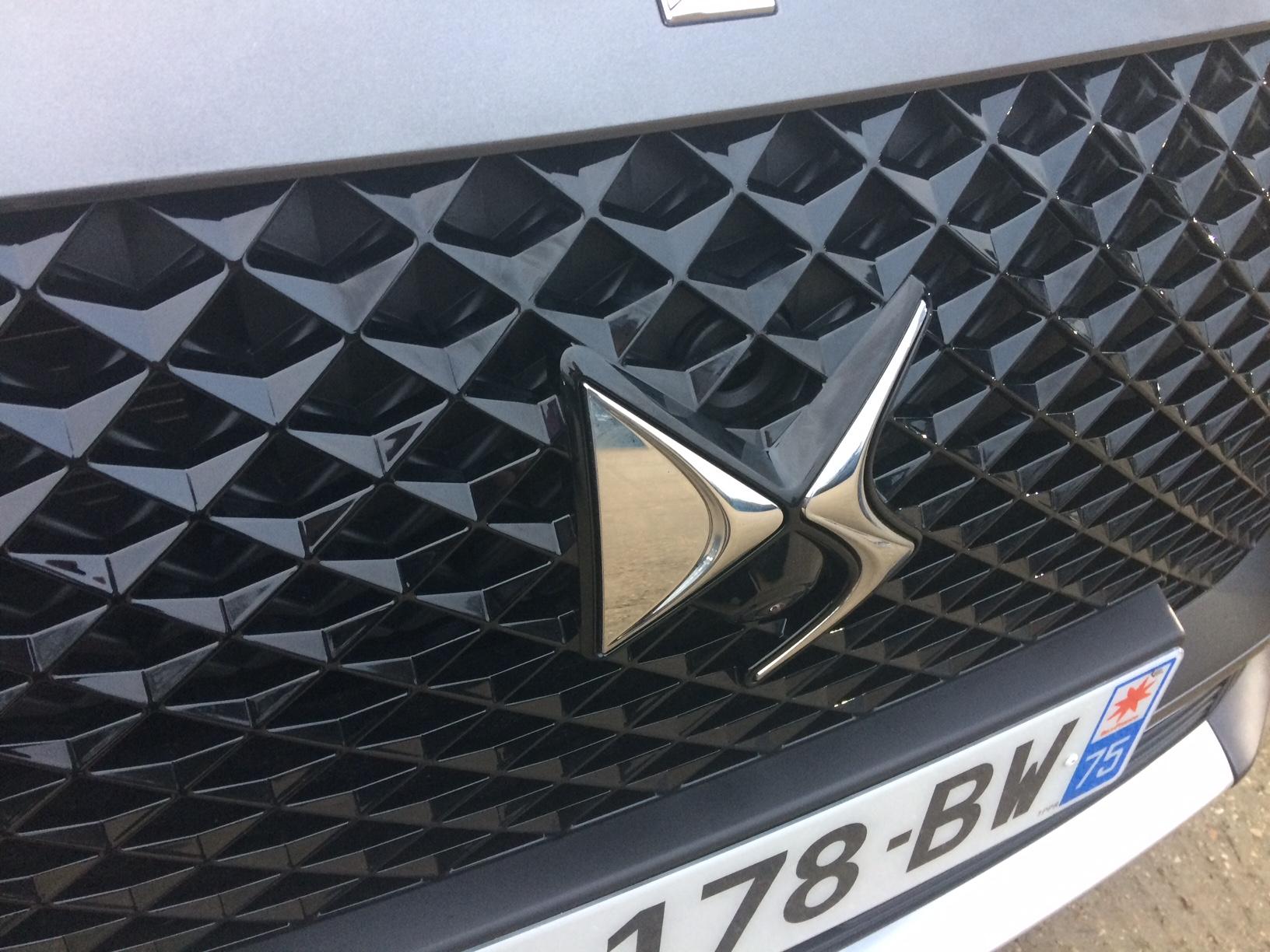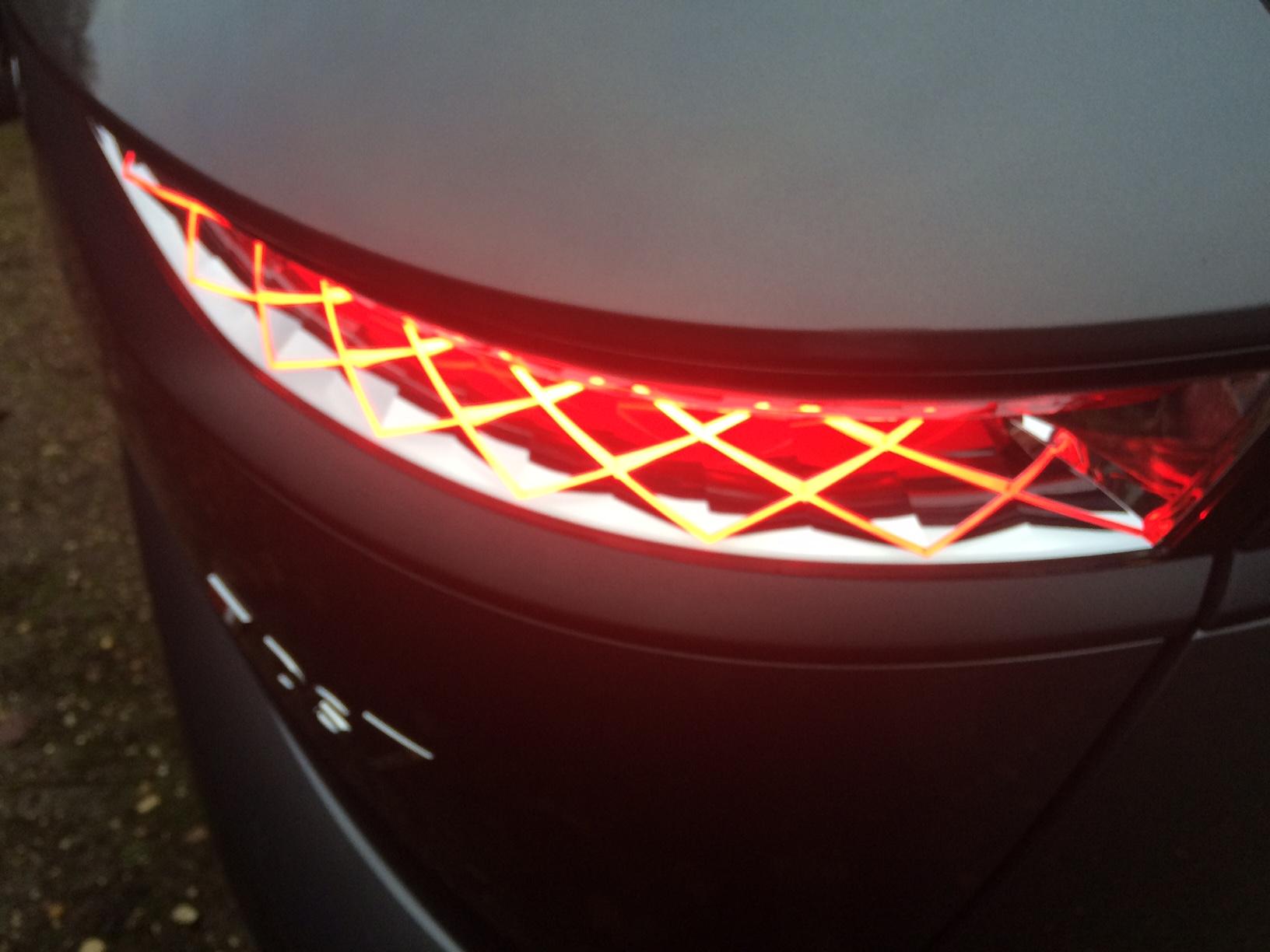Car review: DS 7 Crossback
And it can see in the dark

What is a DS 7 Crossback?
I thought I ought to get the tricky stuff over with first, you see, so here goes. “DS” is the new-ish (2014) premium brand from Peugeot Citroen, also known as the PSA Group. So it is more “avant garde” than the other makes, and derives its name from the original Citroen DS of 1955 – one of the greatest cars ever conceived, and certainly avant garde (it looked like a spaceship next to the Morris Minors and VW Beetles of the day). The figure 7 indicates that it’s bigger and more expensive than its siblings – the DS 3, DS 4 and DS 5 – which were all originally badged and sold as Citroens. The Crossback name is clumsy, yes, but is supposed to get over the idea that it is a Sports Utility Vehicle.

The DS 7 is also the first car to be designed from the start as a DS. The DS people, you see, think that France should have a premium brand of car, given that they have such a preponderance of luxury names in everything from perfumes and luggage to champagne and fashion. The DS 7 Crossback is supposed to be the Dior of the car world. Hence the fancy clock. Hence, too, the generally comfy and classy ambience, essential for a product that is going up against the Audi Q3, BMW X1, Jaguar F-Pace, Mercedes-Benz GLA and Volvo XC40, as well as the no less accomplished likes of the Nissan Qashqai, Seat Ateca and its in-house rival, the Peugeot 3008. This is a car designed to show what France can do, and not for nothing was it the vehicle of choice for President Macron’s inaugural procession down the Champs-Elysee (his car has the tricoleur for a badge, and gold-leaf trim, would you believe).
More grubbily, the DS 7 is supposed to make the company some money, and continue the PSA product and financial revival of recent years. The unstated fear is that no one would be willing to pay £40,000 for a Citroen, but they might just be persuaded by the perhaps more exclusive DS moniker.

Should they be? Well, the DS 7 does have a lot going for it. At its launch the (now separate) DS team of designers and engineers were anxious to demonstrate their attention to detail. And much the loveliest detail on the new DS 7 Crossback is the clock that sits on top of the dash, and indeed rotates out of it when you switch on the ignition – a sort of Art Deco retro affair. Eccentric with it too, as it picks out 12, four and eight of the clock, which you may not have encountered before. It’s designed by BRM, a high-end Parisian horologist, and is symbolic of what DS want you to relish about the car – its Frenchness (when the TV ads come in the new year they’ll proudly feature the Parisian nightscape and La Marseillaise).
It wants for little in truth, even in its lower trim levels, with tasteful cloth and nice big screens for the sat nav and on the dash – and you can choose various interior styles from what sound like stops on the Metro: Bastille, Rivoli, Opera and so on, “featuring the noblest of materials”, as they say. The leather on the top trim models has been deliberately patina’d to give it a little “shabby genteel” appeal; the rear seats will decline electrically – and the driver’s seat even has a massage function with variable settings, including one evocatively called “cat’s paw”. Goodness, it even has suspension that can pre-emptively react when the car detects a pot hole or bump ahead, and the system is well set up, coping with rough roads exceptionally well even when fitted with 19-inch alloy wheels. So it behaves just as a Citroen, sorry DS, should behave.

There’s lots of attention to detail on the DS 7 – if anything too much. Diamonds are everywhere, forever you might say, being a shape that has been adopted as a theme, and which naturally blends with the DS brand’s squiggly logo (they call it the “papillon”, and it does look a bit like a butterfly I guess). Most of the buttons are diamond shaped, there’s a lozenge shape to the speakers, little diamonds for the grille mesh, tiny diamond-themed rollers in the steering wheel controls and so on. You’ll find diamonds in the detailing around the door release, the indicators and the quilted upholstery on some versions; the door mirrors, virtually everywhere you look. So you get the picture. I liked them, though I could see how you might tire of the repetition. I’m only a little surprised they didn’t give it square wheels.
I also liked the night vision display, which uses a heat sensitive camera to detect animate obstacles ahead – pedestrians, pets, livestock and cyclists. So the DS can see in the dark, something you can drop into conversation when people ask you: “What’s a DS 7 Crossback?” This is the sort of thing that a few years ago was top-end military hardware, but can now be used for a much more constructive end, namely spotting hazards and saving lives, which it does by beeping at you and highlighting the shadowy figures with yellow or red boxes, depending on how near you are to them. It’s also the sort of kit that buyers expect when spending £30,000 or £40,000 on personal transport. So there’s adaptive cruise control, including in traffic jams, a lane assist, which means a lighter touch on the wheel as the car will keep you in lane on motorways, say, plus emergency automatic braking.
The DS 7 will come with a wide range of diesel engines, with six-speed manual and eight-speed automatic gearboxes, and the ones I tried were as smooth and clean as engineers can make them these days, and superior to the petrol model even in refinement, which is quite an achievement. PSA’s decades-long experience and huge investment in diesel technology makes the current head-banging diesel backlash even more unfortunate, but it is what it is – sales of diesels dropping about a third in a year. However, a petrol-electric DS 7 won’t arrive until mid-2019. That represents a further damaging delay in the parent company’s adoption of this popular, if flawed, method of propulsion.
The spec
DS 7 Crossback BlueHDi 180 Prestige Automatic
Price: £39,335 (range starts at £28,050)
Engine capacity: 2-litre diesel; 8-sp auto
Power output (hp @ rpm): 571@5,500
Top speed (mph): 134
0-62 mph (seconds): 9.9
Fuel economy (mpg): 57.6
CO2 emissions (g/km): 128
I can only really seriously fault the DS 7 as a car, though, for the absence of a heads-up display, a slightly brutal lockdown from the auto box at very low speeds in sport mode, and an annoyingly dozy sat nav, which I’d encountered before on its sibling, the Peugeot 3008. PSA certainly need to sort that out.
The overall package is a little less than the sum of its exquisite French details. By that, in case you’d not noticed, I mean the unmistakable resemblance to an Audi. Now the DS team stoutly maintain that in fact the DS bold grille was inspired by them and them alone, and its chrome ‘moustache’ detailing derived directly from the front bumpers of the 1955 Citroen DS. Who am I to argue? But whoever ripped whoever off first, the pair could be easily mistaken for each other in the supermarket car park, though maybe not on the used car lot where the DS will probably, if it runs to from, suffer more depreciation than its German badged rivals (leaving aside that the Q3 is in fact built by Seat in Spain).
PSA group, it is fair to say, has arrived late to three different automotive parties. Toyota kicked off the hybrid race 20 years ago, yet Peugeot, Citroen and DS are still basically diesel-driven brands, falling rapidly out of fashion. They have a very limited offering of electric-only vehicles, compared to, say, Renault/Nissan. Secondly, PSA turned up well after the SUV party had got going, with everyone from Kia to Bentley getting on down. Even now the new Peugeot SUVs (3008 and 5008) and this DS 7 lack a proper four-by-four drivetrain (though the DS 7 hybrid does promise that via two electric motors front and rear).
Third, and most crucial, PSA failed to acquire or develop a premium marque until now. This was another strong trend across the market world-wide, and they have largely missed out on it. There are different ways of doing this: you can revive an old name like Mercedes did with Maybach, for their super-premium models, or you can buy one like Fiat did with Alfa Romeo, or Ford with Vauxhall and General Motors with Saab – or you can just invent one like Toyota did with Lexus and Nissan with Infiniti or Mazda. There has been mixed success for all of these marques, and some are no longer with us – that highlights how risky the DS project really is. I suppose it’s worth adding that at various points in the past, Peugeot and the larger Citroen (OK, not the 2CV) were solidly upper-middle class machinery, and regularly tested by the mags alongside a Mercedes or BMW. As it happens, Peugeot is making admirable progress in adding quality back into its products and could again be premium. In which case, I wonder whether they really need DS. Heritage probably trumps diamonds in the car card game.
Join our commenting forum
Join thought-provoking conversations, follow other Independent readers and see their replies
Comments
Bookmark popover
Removed from bookmarks